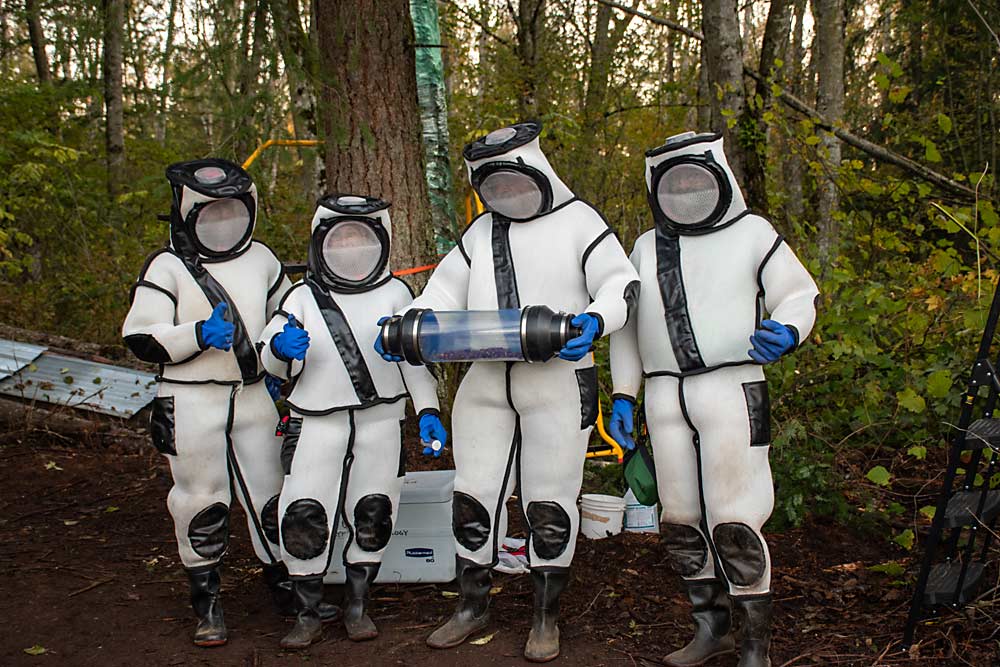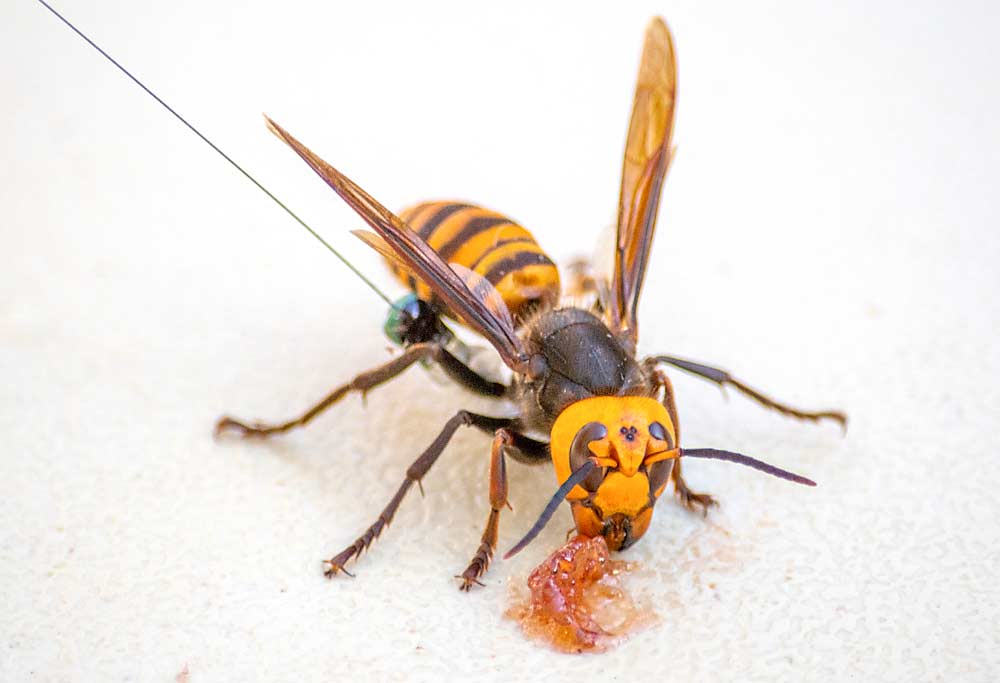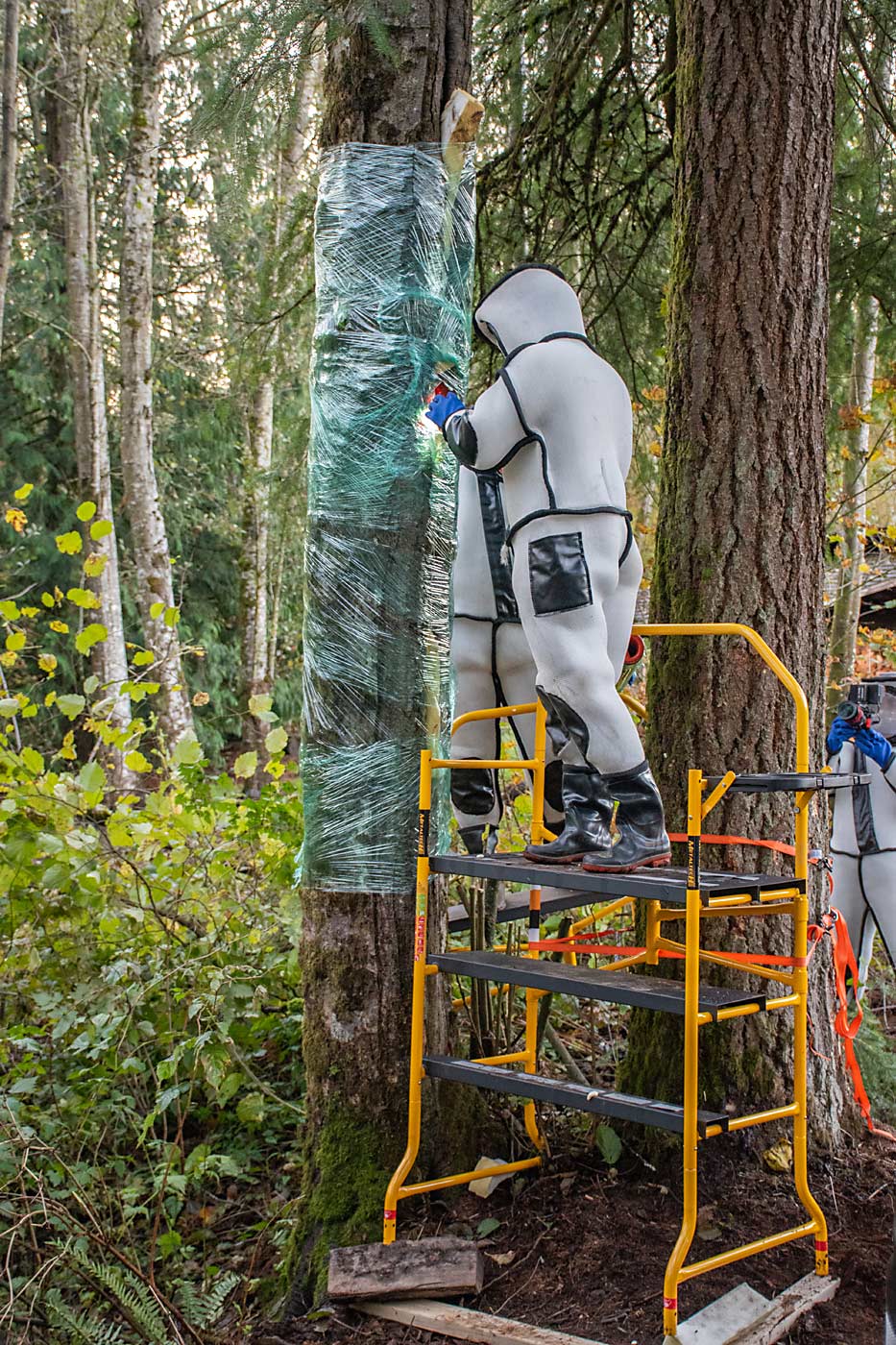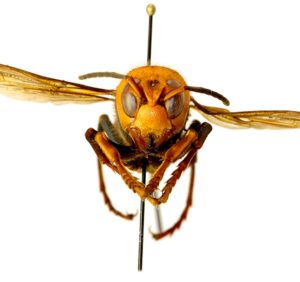
Wearing supposedly sting-proof suits, a team of enterprising entomologists successfully eradicated the first identified Asian giant hornet nest in Northwest Washington over the weekend.
Thanks to the early morning cold temperatures, the notoriously aggressive invasive hornets were quite docile, according to Sven-Erik Spichiger, managing entomologist for the Washington State Department of Agriculture. No one was stung — good news, obviously — but that didn’t give the protective suits a chance to prove their worth against the large hornet that can sting through typical beekeepers’ gear.
“We’ve demonstrated that we can trap, track and eradicate,” Spichiger said in a press conference on Monday. “That’s what we need to do to win the war.”

The program to eradicate the hornets began late last year, when the first specimen was found in Whatcom County. As a predator of honey bees, establishment of the hornets would pose a serious threat to pollination-dependent agriculture, as well as people.
Efforts to trap the hornets began in earnest this summer, with thousands of traps placed around the region. Researchers needed to learn to catch live hornets so they could outfit them with tracking devices to find the nests. The U.S. Department of Agriculture provided radio tags, which were critical in this first successful effort, said Karla Salp with WSDA communications.
A tagged hornet led the team to the nest on Thursday, located in a crevice in a tree on private property. Expecting to find a nest in the ground, the WSDA team had to modify their eradication plans, Spichiger said.

They stuffed foam into cracks in the tree above and below the nest and wrapped the tree in cellophane, leaving just one opening. Then, they used a shop vacuum outfitted with a purpose-built hornet-collecting tube to suction out 85 live hornets that will now be used for research.
After the hornets were removed, they pumped carbon dioxide into the tree to asphyxiate any remaining hornets. That should have been sufficient, but they also sealed the tree with spray foam and wrapped it further, he said. Later this week, a contractor will cut down the tree so researchers can get a good look at the nest.
From the trapping data collected this summer, the WSDA believes there are one or two more nests in Whatcom County, Spichiger said. Trapping efforts will continue at least until the end of November, but a cold, hard freeze will likely stop the hornets’ activity. Nests usually have a one-year life cycle and produce new, mated queens who overwinter and then start new nests, he said. The additional nests indicated by this year’s tracking are likely descendants of one original invasive nest last year, and the WSDA is working quickly in an effort to prevent more mated queens from dispersing.
“I’m cautiously optimistic that we are kind of ahead of this,” he said. “I think we still stand a really good chance of keeping this out.”
Salp urged Washington residents to continue to keep an eye out for the hornets and report any sightings to hornets@agr.wa.gov. For more information, visit www.agr.wa.gov/hornets.
—by Kate Prengaman







Leave A Comment